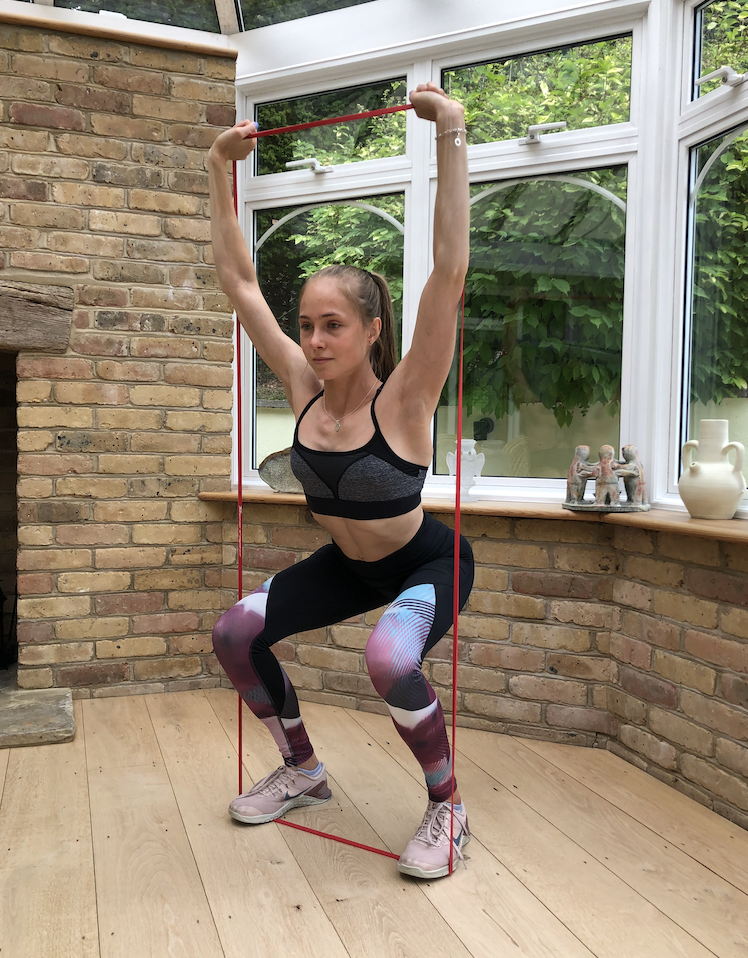Making Squat Gains without a Squat Rack
Making Squat Gains without a Squat Rack
Share
Squats are one of the most popular exercises. An exercise we cannot avoid if we set foot into a gym or fitness studio. What if we don’t have access to or don’t want to go to a gym? Is it still possible to make progress on this classic lift? In this article, we cover the 4 best methods that you can use at home to keep your squat gains coming, even if you don’t have a gym at hand.
There is no doubt that a proper training facility is optimal for making progress on any lift, as they offer a variety of weights and machines that not only enhance your lifting practice, but also help strengthen supporting muscles for the lifts, which is a curtail part to achieving lifting goals. We should also mention that goals can be very different, and for certain strength goals heavy weights are essential, but maintenance and lean physique goals are perfectly achievable in the comfort of our own homes.
Building muscle classically requires medium weights and a repetition range of 8-12 reps. This training approach, paired with a good nutrition plan, hydration, and substantial rest and recovery time allow muscle growth. This approach is not perfectly achievable with home workouts, but we can do things to get as close as possible. The 4 methods provided below should give you some ideas on how to keep your squat gains coming on days that you are unable to get to the gym.
Method 1: Add Resistance with DIY Weights
Adding some extra load to your squats is actually much easier than you think. Look around your home: there are definitely heavy items of decor or furniture that you can use to add some weight to your squat practice. Another great option are long resistance bands, which you can buy online (e.g. on Amazon.co.uk) for a low price, and they are worth investing in. Other ideas to add resistance to your squats are 5L full water bottles, chairs, and possibly your child or spouse (this may or may not be taken as a joke). Turn your creativity on and look around you! I guarantee, there is something you can use to add resistance to your squats.
Method 2: Explosive Movement
Explosive exercises are a great way to put additional stress on your muscles without having to add a lot of weight. Squat jumps and box jumps (use stairs) can come very handy in home workouts, and when repeated a large number of times will fatigue muscles sufficiently and create a stimulus for them to grow. It cannot guarantee extreme muscle growth from explosivity, but you can definitely rely on jump squats for muscle endurance, accompanied by moderate muscle growth.
Method 3: Work with Time Under Tension
Time under tension is the time that your muscle is working during an exercise. Slowing down your squats will increase the amount of time when your muscle is contracted, i.e. increase time under tension. Holding a squat or pulsing in a squat can create a good burn of the muscle, which means that the muscle fibres are being damaged, and thus will be over-compensating in recovery to build more muscle fibres.
Method 4: Repetition Range
The more repetitions you do, the more fatigued your muscle becomes and the more muscle fibres are damaged. Extremely high numbers of repetitions can cause more muscle damage than desired, so it is best not to go higher than 25 reps in a set. High volume can also be achieved in circuits, where there is enough time for the muscle to recover before engaging it again.
Gains are still possible at home. They may not be as fast as in the gym, but when we have a goal and consistently work on it, we will achieve the result. The rules are still the same for training with equipment or without equipment: consistent training which causes some muscle fibre damage in a medium to high rep range will help build muscle.
























FOLLOW BESTFIT